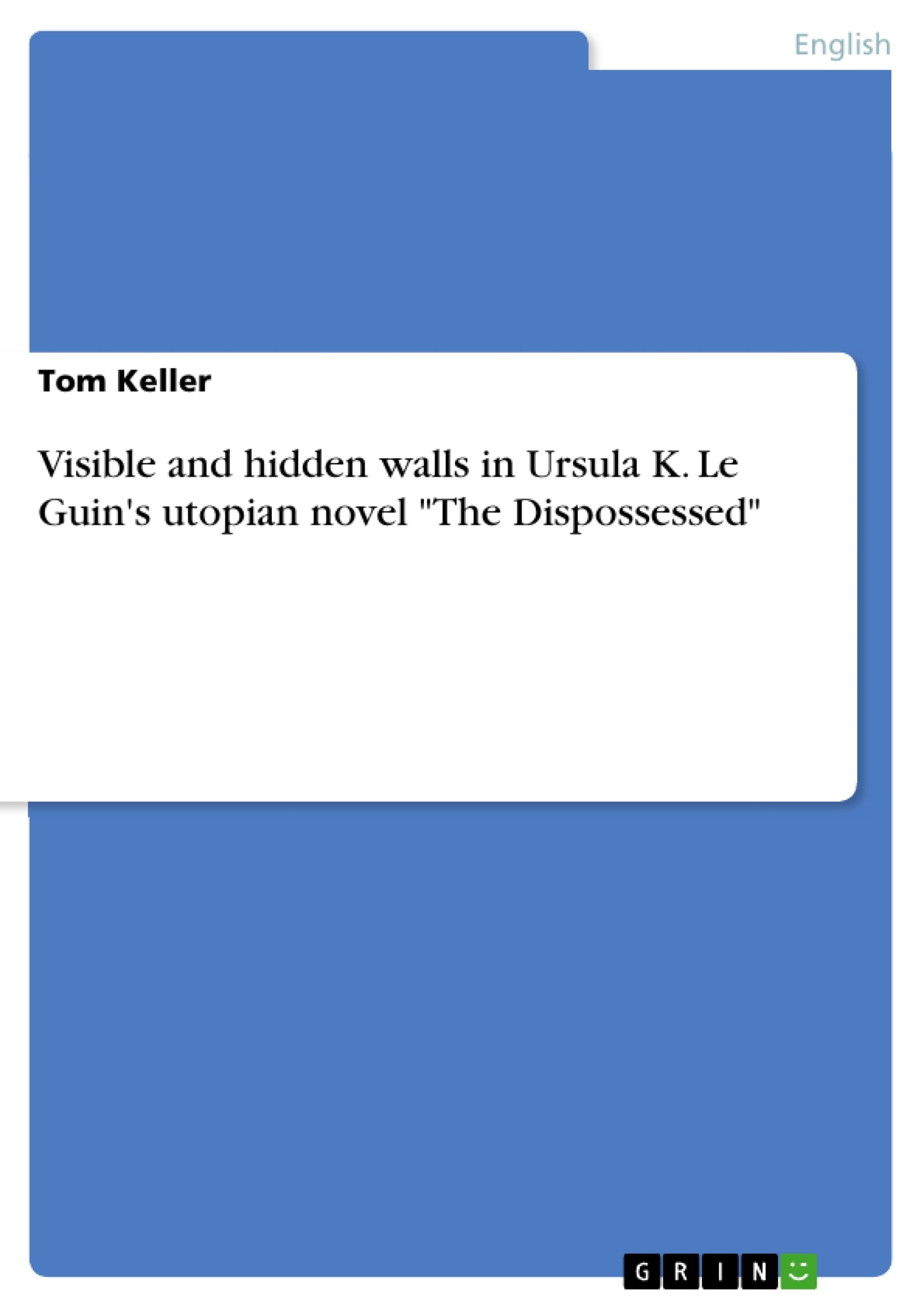In Ursula K. Le Guin´s utopian novel "The Dispossessed", published in 1974, one of the central images are walls, which exist in different shapes and various places, separating people or enclosing them. Some function like a prison, where nobody can break through, while others offer possibilities like freedom and choice. Furthermore, having two sides, walls appear to be ambiguous, depending on the view and interpretation of the individual. The novel describes several walls of different types like hierarchy, superiority, greed, possession, lies or physical boundaries. They appear throughout the novel and get demolished one after another. Shevek, the main protagonist, faces those boundaries, identifies them and tries to tear them down. Basically, the planets in the story are clearly separated, with them their people and also their cultures.
Anarres, at first sight, has just one physical wall, surrounding the port and simultaneously the whole society. Based on a revolution which had the aim of pure freedom and a brotherly society, Anarres has no governmental laws, having an anarchistic society with secretly growing boundaries. Urras is the opposite, consisting of many obvious physical and cultural walls. The people, greedy and egoistic, live between the boundaries, being disconnected by their possessions and their attitudes.
Content:
Theme:
Thesis:
Research:
Method:
Analysis:
Conclusion:
Works Cited
- Arbeit zitieren
- Tom Keller (Autor:in), 2011, Visible and hidden walls in Ursula K. Le Guin's utopian novel "The Dispossessed", München, GRIN Verlag, https://www.grin.com/document/319482
-

-

-

-
Laden Sie Ihre eigenen Arbeiten hoch! Geld verdienen und iPhone X gewinnen. -

-
Laden Sie Ihre eigenen Arbeiten hoch! Geld verdienen und iPhone X gewinnen. -

-
Laden Sie Ihre eigenen Arbeiten hoch! Geld verdienen und iPhone X gewinnen. -

-
Laden Sie Ihre eigenen Arbeiten hoch! Geld verdienen und iPhone X gewinnen. -

-
Laden Sie Ihre eigenen Arbeiten hoch! Geld verdienen und iPhone X gewinnen.

